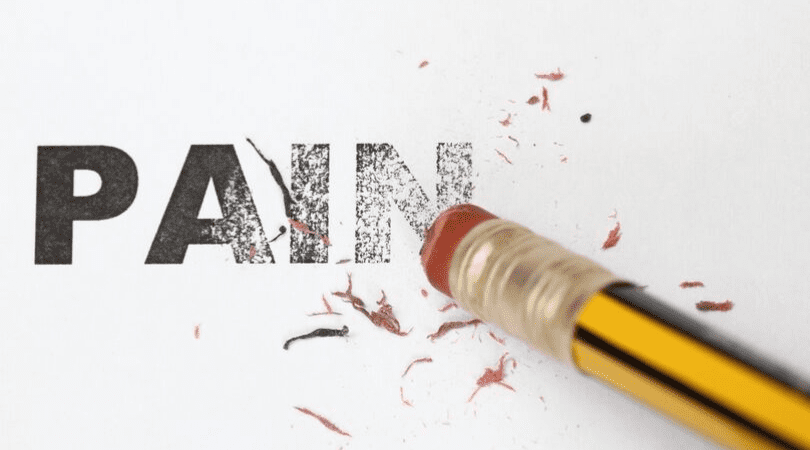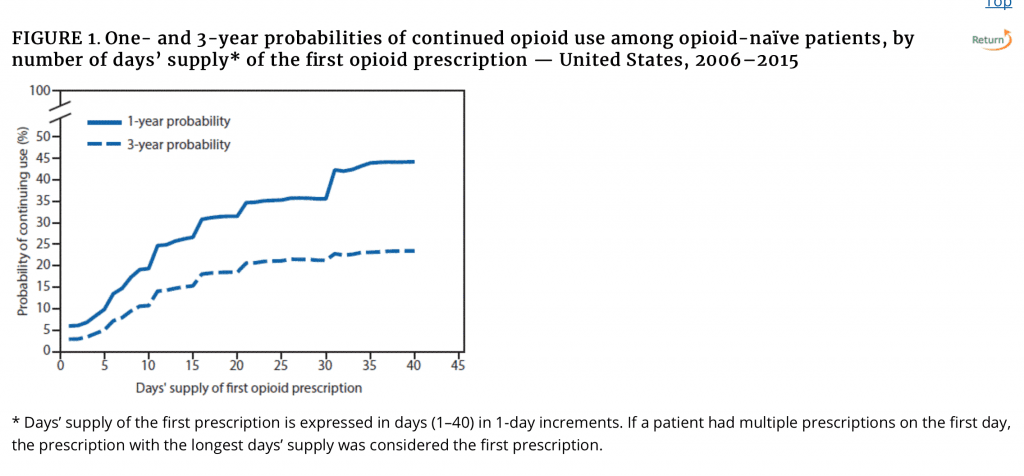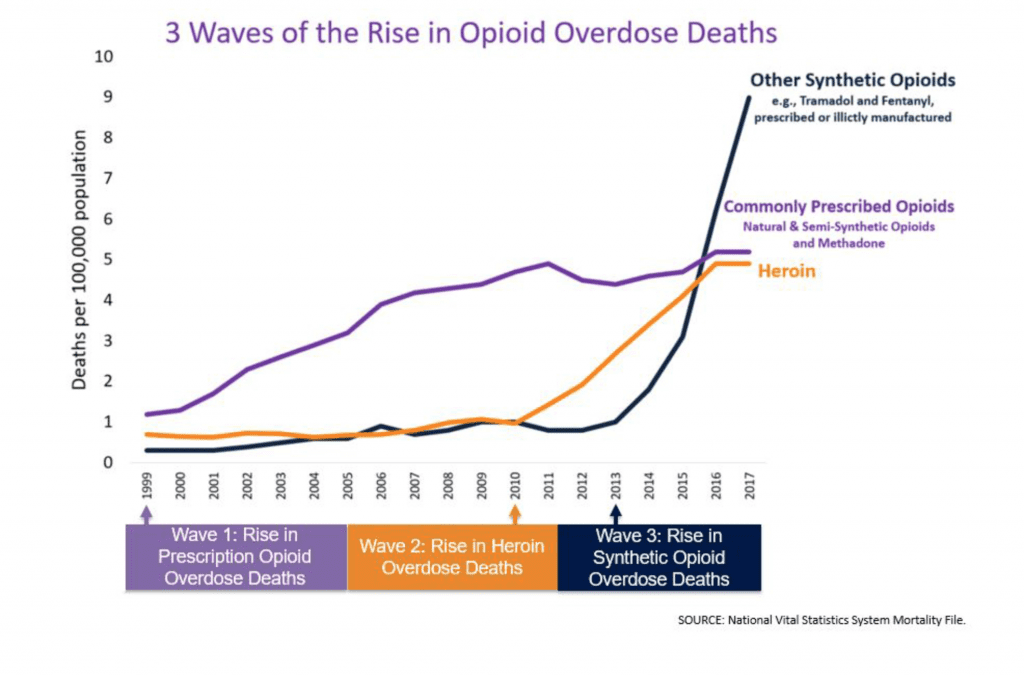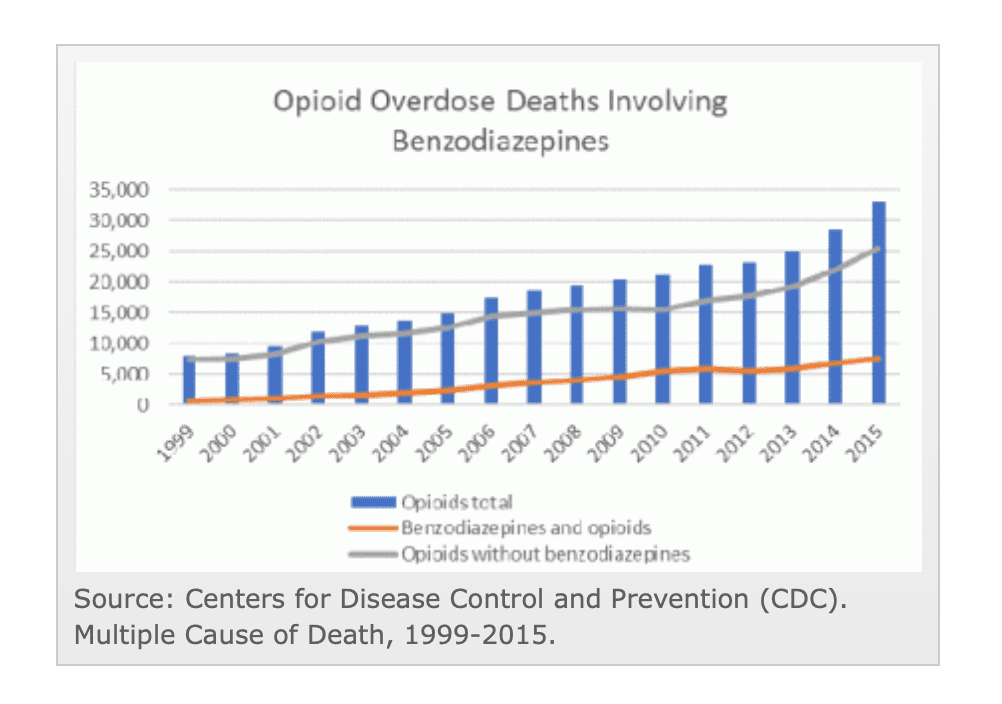By Dr. Sarah Bennett, NMD / September 19, 2019

Something that can truly get in the way of living your best life is pain, regardless of where it is or the severity. This is why pain management is such an important part of medicine offered by naturopathic doctors and MDs alike.
That said, pain management treatment may vary greatly, due to a vast variety of forms of pain and causes. This means a comprehensive guide to all the basics and natural pain management options can be incredibly helpful. This is where I come in!
To give you a better understanding of what pain management really is and what it entails, here is the ultimate guide!

Chronic pain is one of the most common reasons people seek medical care. According to the CDC in 2016, approximately 20% of adults in the United States reported chronic pain – that’s 50 million people!
Chronic pain is linked to comorbid conditions like anxiety and depression and, with conventional treatment, can even lead to dependence on medications like opioids and benzodiazepines. Overall, it can easily result in a decreased quality of life, even if the severity can range widely.
To conquer that, many practices will offer help with pain management. This can mean a variety of different things depending on the practice and the type of doctor. Naturopathic doctors, for instance, may offer different treatment methods than a physical therapist or an MD.
Every person and situation is different, so the best approach will vary from patient to patient. This is why it can be helpful to find a practice that offers a range of different options and comprehensive knowledge on the subject of pain in general.
This also means it’s helpful to go into your appointment with a solid background of your own. It will help you make sure that you ask all the right questions and get the best care to remedy your situation. This is where research (like what you’re doing right now) will really come in handy and boost your experience (and results).

People can feel chronic pain in really any area of the body, and the causes may be multifactorial. This is why your physician should always be thorough with medical history and physical exams to determine the root causes and how to proceed.
A few of the main categories for chronic pain are joint pain, neurological pain, systemic pain, and muscle pain. These can be caused by a variety of different things, including:
This list isn’t meant to scare you as much as show you just how many different things could be causing you pain. Even if you think you know the cause (perhaps you’ve been meaning to improve your posture or already known condition), it’s always important to have a doctor examine you when you’ve been experiencing noticeable acute and chronic pain.

This leads us to the solutions! Fortunately, there are a number of regenerative therapies that I’d recommend, so you will have several to choose from depending on your resources, comfort levels and circumstances.
This involves treating muscular pain by injecting a lidocaine solution directly into painful trigger points to enable relaxation. If you have muscle pain, it may be due to trigger points which are extremely painful knots that form in your muscles.
These knots form when muscles do not relax and are often painful when the muscle is contracted or when pressure is applied. Multiple trigger points are injected for each treatment. Typically, patients receive 4-6 treatments every 1-2 weeks.
Our trigger point injection therapy consists of anesthetic and low concentrations of dextrose. None of our regenerative injections include steroids due to its degenerative effects over time. This can vary between practices, so it’s always good to ask about!
There are no drug or activity restrictions required for this treatment and there is no down time, so it’s perfect for individuals with busy or active lifestyles. The treatment only takes 30 minutes with minimal side effects (typically mild bruising and muscle soreness for up to 24 hours).
Results vary based on intensity of pain, chronicity of condition and overall health of the patient, so be sure to ask questions every step of the way to get an idea at what all your treatment will entail and how your body is likely to respond.
Perineural injection therapy is a natural way to treat neurological pain caused by inflamed or injured nerves. Using a low dextrose solution (a sugar derived from corn) the injections decrease inflammation surrounding the nerve and restore it to its natural functioning to decrease pain.
The injections themselves are superficial, treating nerves that run just below the skin surface. The injections are provided along the inflamed sensory nerves. The treatment area will vary based on which nerves are affected and the number of injections needed is based upon the surface area covered.
On average, patients will need 6-8 treatments every 1-2 weeks for optimal results. Perineural injection therapy treatments only take 30 minutes and require absolutely no down time or restrictions of drugs or activities, so it’s another great solution for busy individuals.
Once again, the results will vary from patient to patient, so you should still have thorough and honest conversations with your doctor to gauge what your expectations should be throughout the process!
Also known as proliferation therapy, this natural treatment is for musculoskeletal conditions that cause pain and instability. The injections cause a low grade localized inflammation response that facilitates the healing cascade. As a result, cell proliferation (the building blocks to strengthen and regenerate healthy tissue) is generated.
Prolotherapy is strictly regenerative and does not contain any sort of steroid or cortisone in the injections. These injections are effective for treating chronic pain as well as acute injuries that are healing slowly or inappropriately. Optimal results require several injections every 2-4 weeks.
Platelet rich plasma (PRP) is exactly what the name states: blood plasma with a high concentration of platelets and growth factors. Platelets are an essential cofactor in the healing process, recruiting stem cells and releasing growth factors to stimulate localized inflammation, blood vessel growth and increased immune response.
In this way, PRP therapy stimulates the healing cascade, increasing tissue regeneration and strengthening them. Platelet rich plasma is derived from a patient’s own blood after it has been processed.
This therapy is also strictly regenerative without any sort of steroid or cortisone in the injections. On average, 2-6 treatments are given every 4-6 weeks for optimal results and pain relief. Generally, a patient will need 1 PRP injection for every 2-3 Prolo injections to achieve similar results.
Amniotic fluid concentrate therapy consists of injections of donated amniotic fluid that contains robustly high amounts of growth factors and stem cells surpassing not only Prolo but even PRP in regenerative efficacy.
Similar to Prolo and PRP therapies, amniotic fluid therapy stimulates the immune response and healing cascade in the localized injured area. Amniotic fluid contains enormous amounts of growth factors, cytokines, beneficial proteins, cells and nutrients that stimulate tissue growth and regeneration to effectively treat joint pain and instability, hence the higher efficacy.
This revolutionary therapy dramatically improves healing time and pain resolution, and it may even be used in patients without viable platelets! It’s always worth seeing if this treatment is right for you since it is one of the most efficient methods available.
Lastly, there is Exosome Therapy. Exosomes are extracellular vesicles that are responsible for all intercellular communication within the body. Exosomes that are derived from mesenchymal stem cells are used in regenerative therapies for their ability to stimulate cellular proliferation and regeneration.
These mesenchymal exosomes activate many signaling pathways that are crucial for healing, inducing expression of many growth factors like nerve growth factors, insulin-like growth factors and hepatocyte growth factors.
Research has shown that mesenchymal exosomes are able to enhance the viability of cardiomyocytes after ischaemia/reperfusion injury during something like a heart attack. This finding validates the hype around the regenerative properties of exosome therapy!
There are several advantages of using exosome therapy over stem cell therapy. One example would be that the harvesting process is less invasive to the patient. This means they are less likely to stimulate an exaggerated or unwanted immune response. Plus, exosome therapy can provide delivery of higher quantities of signaling proteins, lipids and miRNAs (recent discoveries show their ability to control gene expression and epigenetics, boosting regenerative effects).

As mentioned, different doctors will offer different treatments and approaches, but naturopathic doctors can be an excellent choice in this area specifically!
Generally, naturopathic physicians have a more comprehensive approach to pain assessment and management due to their holistic approach to treatment overall. That said, I cannot speak for other physicians, so it’s always good to make sure you ask questions and make sure you find the right doctor regardless of their specialty!
A good physician will consider that pain may be (and often is) multifactorial in nature. While naturopathic physicians will often have strength with this type of approach, you can find it in many integrative or traditional practices as well if you find the right provider.
Some of the methods that naturopathic physicians are known to use include:
Ultimately, if you are looking for a natural approach to your recovery, it is probably clear how a naturopathic doctor will be the best resource.

Ultimately, your road to successful recovery is in your hands. It is up to you to make sure you find a quality, reliable provider and that you keep up with any instructions they give you, whether it be extensive physical therapy homework or simple mindfulness.
As a rule of thumb, successful pain management protocols require a holistic, comprehensive approach. A single, regenerative injection treatment or prescription in general will likely not be effective since pain is complex and deeply rooted.
Success requires a comprehensive view of the body’s functional status through blood work, nutritional reform, lifestyle improvement, appropriate regenerative injection treatments and/or supplementation. It also oftentimes will require physical therapy.
Ultimately, successful pain management is attained by identifying the true cause and remaining dedicated to your recovery. As long as you have a mindset of recovery at all times and make sure you find a dedicated and genuine doctor to care for and guide you, you will be on your way to a more pain-free life.
With so many good treatment methods to turn to, you should do your best to avoid methods that can be potentially problematic. Of course, every patient is different, but acknowledging the risks of certain treatment methods and knowing how to recognize red flags are important and responsible in knowing how to proceed.
To start with over-the-counter options to be wary of, NSAIDs and Acetaminophen will be your most common options. It’s great to have access to nonprescription treatments, especially in cases of minor or circumstantial pain, but be aware that long term use can be damaging and dangerous.
Ibuprofen can eventually cause damage to the GI tract and kidneys while long term use of acetaminophens can cause damage to the liver. The main takeaway here is that while they are okay for the occasional bad headache, they shouldn’t be used to treat chronic or more serious pain, especially without the supervision of a doctor.
More seriously, it’s important to touch upon long term opioid use for pain management. It’s well-known that opioid addiction has been crippling more and more people in recent years, and these numbers must be taken seriously since it can be truly devastating to your life should you fall victim.
Opioids are a frequently used, conventional treatment for pain. That said, risk of dependence and addiction increase steadily with the duration of prescription.

Even after acknowledging the chance for dependence and addiction, you may still be wondering how serious and dangerous those addictions are; after all, not all substance abuse results in devastating effects. Plus, even though cigarettes and alcohol are dangerous addictions, they likely elicit different assumptions and reactions than, say, a heroin addiction for example.
To put it into perspective, 130 people die every day by overdosing on opiods. Overdoses have increased 30% from July 2016 through September 2017 in 52 areas across 45 states in the U.S. The midwestern region saw opioid overdoses increase a startling 70% from July 2016 through September 2017.

While opioids present significant danger and risk independently, they often aren’t the only player in an addict’s struggles. More than 30% of overdoses also involve the use of benzodiazepines (commonly used for anxiety management).
This is crucial to take into consideration when recovering from major pain if you already struggle with benzodiazepine use or receive treatment for concerns like anxiety. The combination can be deadly and your physicians should absolutely take this into consideration when prescribing your treatment options.

This also goes beyond danger for patients. The Centers for Disease Control and Prevention estimate that the total economic burden of prescription opioid misuse in the United Sates is about $78.5 billion a year.
Moving past opioids, you should also avoid cortisone injections. They are chondrolytic, so over time, they will further contribute to the degradation of cartilage, ligaments and tendons in the treated area.
These injections artificially suppress inflammation in the area. This helps to decrease the sensation of pain, but it ultimately acts as a bandaid without addressing the root cause and providing real, sustainable results.
Nerve ablation is another treatment to avoid as it destroys local sensory nerves in order to disrupt the transmission of pain signals to the brain. Much like with the cortisone injections, this doesn’t actually fix the root cause of the problem at hand.
Plus, this treatment may often be effective for short term pain management (9 months – 2 years), but the sensory nerves will often regrow and cause a return of original symptoms. If you are looking for true, long term solutions to your pain, this should generally be avoided for that reason.
Make sure that you are also careful with stem cells! Regulations for stem cell therapies are becoming stricter due to a lack of research proving efficacy. There is also a concern regarding adverse effects like infection, cancer, blindness, tumor growth, neurological dysfunction and cardiovascular problems.
Although many of these adverse effects resulted from more invasive procedures like infusions or direct injections into the brain, eye or heart, it is still important to understand the risks involved. Risk can vary depending on the type of stem cell therapy and treatment location (eye injections have greater risk than intra-articular injections), so be sure to do specific research regarding your exact situation beforehand.
Stem cells may be autologous (harvested from your own body utilizing adipose tissue or bone marrow) or allogeneic (from a donor and often harvested from a donated embryo or umbilical cord). Due to increased regulations, cost and safety risks, many clinics are staering away from the stem cell therapies and offering exosome therapy instead.
Lastly, be wary of surgery since, while it may be necessary in severe cases, invasive surgeries (e.g. joint replacements) are often recommended prematurely and before utilization of regenerative injection therapy.
If you and your physicians come to the decision that surgery is the necessary course of action since other methods are not working, absolutely do what is needed to relieve your pain. Simply make sure you are exploring all of your options first!
Being an informed patient is one of the most important elements in making sure you receive quality care.
To move onto the red flags you should notice when choosing your provider, we will start with practices who solely rely on imaging when diagnosing and treating you.
Imaging does not show pain! X-rays, ultrasounds and MRIs may be effective at visualizing injuries such as ligament, tendon or muscle tears, bone fractures and mis-alighnment of the spine, but as a general rule, they are not as effective for diagnosing chronic pain.
While imaging may help to explain the source of pain, things like a herniated disk, osteophyte of narrowing joint space doesn’t always mean you will have pain. Many healthy individuals would display these findings, so they won’t necessarily answer your problems.
More importantly, many factors that contribute to pain simply don’t show up on imaging. This can include muscle inflammation, smaller muscle/tendon/ligament tears, inflamed cutaneous nerves and dysfunctional fascia.
Another red flag to be aware of is false marketing. I have seen physicians marketing PRP injection therapy as stem cell therapy which isn’t even close to true. Take your health into your own hands and always educate yourself on the treatment you will be receiving (and ask thorough, informed questions before beginning).
Lastly, if your physician does not touch you, they are not evaluating you properly! Physical exams are an important part of the process and provide valuable information that can (and often does) change diagnosis or treatment approach.
Even if physical touch isn’t your favorite part of an exam, it is absolutely needed with pain management, so make sure you are fully evaluated before a diagnosis and treatment plan is discussed!

This brings is us to the ultimate step: finding the right provider for you and your unique pain situation. Aside from avoiding the red flags already mentioned, there are definitely some things you can actively make sure to look for.
Look for a physician that will evaluate your pain holistically and develop a comprehensive treatment pain. This will ensure that they truly get to the root cause of your pain and treat your whole body and illness, not just the immediate symptoms.
I recommend seeing a physician who is trained in regenerative therapies (prolotherapy, PRP injection therapy, etc.). These are often great alternatives to simply jumping right into more invasive solutions like surgery that can leave you out of commission for months, turn out very costly or even leave permanent changes that could have possibly been avoided.
Also, be sure to find a provider who has your best interest at heart and isn’t just trying to make a quick buck. Not everyone needs complex stem cell therapy, for example! Yes, stem cell therapy (as well as exosome therapy and amniotic fluid therapy) has a higher concentration of growth factors to stimulate the healing process, but it doesn’t mean you need it.
Depending on age, injury and general wellness, different therapies may be just as effective (or even more so) than some of the complex, expensive options. A knowledgeable and ethical physician will be sure to educate you on the reasoning behind their recommendation so you can truly be making your own educated decisions.
This brings us to my process! I’m a naturopathic physician, so my goal is to help you restore your body’s optimum health in the most natural, comfortable way possible.
I start with a 60-minute in-depth new patient intake that involves discussing your history of pain and evaluating concerns with indicated physical exams. This helps me really get to know you and your circumstances so I can determine the best way to help.
I then order comprehensive lab work based on your specific needs. This allows me to evaluate factors that may influence your pain like inflammation, autoimmunity, genetic mutations, hormone imbalances, deficiencies and more!
After a thorough review of these labs (I’m always sure to go through every part of it with you as clearly as possible), we begin an individualized, comprehensive protocol that often includes a combination of lifestyle and nutrition reform, supplementation, bio-identical hormone replacement therapy, medication reform, physical therapy, chiropractic therapy and regenerative injection therapy. The combination all depends on you and your specific lab readings!
Ultimately, my goal is to help you achieve your goals with pain management in a comfortable and educational manner. I think it’s important to keep you informed every step of the way so you don’t feel anxious about completely leaving your health and future in someone else’s hands!
Pain is a frustrating thing for anyone to deal with no matter the specifics, so it’s understandable that pain management is one of the most sought after forms of care.
By understanding chronic pain and the best available regenerative therapies, you are that much closer to finding the solution that works for you. If you are still narrowing down the method that seems to best fit your needs, be sure to ask a trusted provider (or reach out to me!) about:
Of course, there are still many other pain management methods that can also be used in your treatment plan, so the best way to figure out everything that you will need to cure your pain is to really talk through your experiences and needs during a consultation. For more in-depth information, be sure to get my free e-book! What are you excited to do with a pain-free life?
Top Pain Management in Arizona:
Hello, my name is Dr. Sarah Bennett, NMD!
I am a naturopathic physician licensed in the state of Arizona currently practicing at my office in Scottsdale, AZ. I received my degree from Southwest College of Naturopathic Medicine, did a year residency at Keystone Natural Family medicine, and received additional training for aesthetics & anti-aging at National Laser Institute.
My passion and fascination for natural medicine began during my undergraduate studies at Indiana University where I got a dual degree in neuroscience & psychology.
I saw how a preventative approach could help you live a long and youthful life. Since then I have dedicated my life to serving others to understand the latest medical trends.
I spend my spare time running, hiking, rock climbing, camping, testing out new diets, and reading books on latest medical trends / listening to podcasts to find the latest nuggets of knowledge to improve the quality of life for my patients. I look forward to serving you!